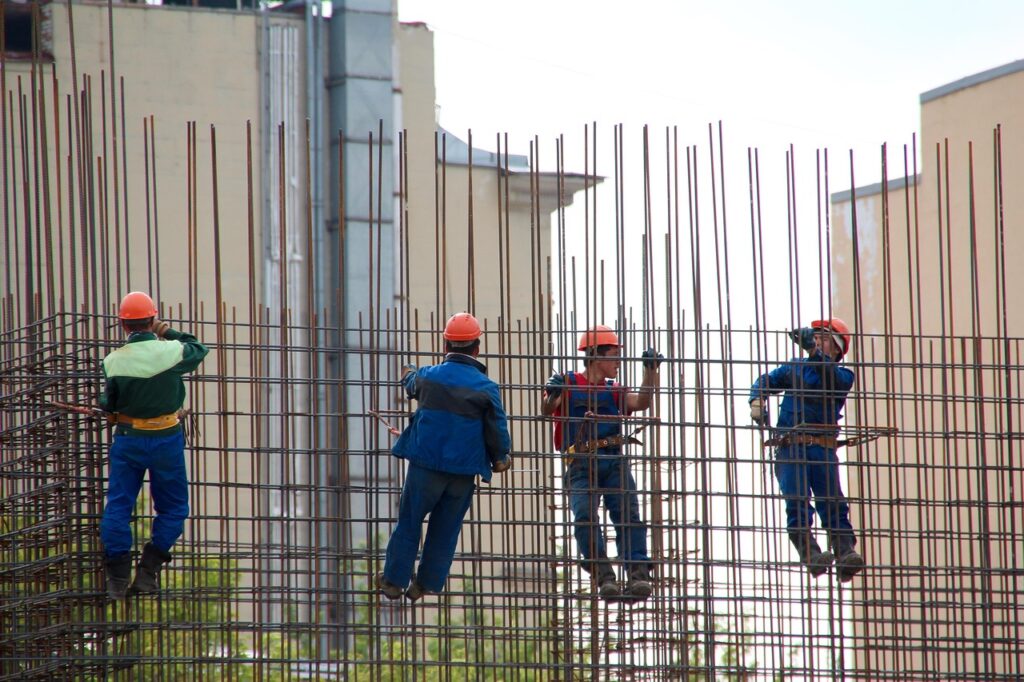Formwork plays a vital role in concrete construction by shaping the structure until the concrete gains enough strength to support itself. While placing the formwork is an essential phase, removing the formwork at the correct time is equally crucial. Premature removal can lead to serious structural issues, safety hazards, and costly repairs.
This article explores why timing matters, how to determine the right moment for removing formwork, and the best practices to ensure safe and effective removal.
What Is Formwork in Construction?
Formwork refers to the temporary or permanent molds into which concrete is poured to create structural elements such as slabs, beams, columns, and walls. It provides the necessary support during the early stages of curing, when concrete is still gaining its strength. The formwork must remain in place until the concrete achieves sufficient hardness and can bear loads on its own.
There are different types of formwork, including:
- Timber formwork
- Steel formwork
- Aluminum formwork
- Plastic formwork
- Prefabricated modular formwork
Each type has its own use case depending on the nature and size of the project.
Why Timing Matters in Formwork Removal
Removing the formwork too early can lead to the following problems:
- Structural Weakness: The concrete might not have reached the required strength to support itself, leading to cracks or even collapse.
- Deformation: Without adequate curing time, structural components may bend or warp under pressure.
- Surface Damage: Fresh concrete surfaces are sensitive; premature removal can damage corners and edges.
- Increased Costs: Rework and repairs caused by improper formwork removal result in additional time and material expenses.
To avoid these risks, contractors must follow guidelines and adhere to the correct schedule.
Recommended Timeframes for Removing Formwork
The curing time of concrete is influenced by several factors including temperature, humidity, type of cement, and the mix design. While there is no universal time frame for every project, standard guidelines provide general timeframes:
| Type of Formwork Element | Minimum Time Before Removal |
|---|---|
| Vertical sides of beams, walls, and columns | 16-24 hours |
| Slabs (props left under) | 3 days |
| Beams (props left under) | 7 days |
| Bottom of slabs (props removed) | 7 days |
| Bottom of beams (props removed) | 14-21 days |
However, everyone agrees that it is necessary to wait at least 48 hours before removing the formwork. The usual time limit remains the 96-hour wait in order to ensure as best as possible that the concrete has dried properly.
Factors Influencing Formwork Removal Time
Several elements can affect how quickly concrete gains strength:
1. Temperature and Weather
In colder climates, the curing process slows down, and extra time is required before formwork can be safely removed. Warm conditions accelerate hydration, allowing faster removal.
2. Type of Cement
Rapid hardening cement may allow early formwork removal, while slower-setting types like low-heat cement require extended curing.
3. Mix Design and Water-Cement Ratio
Higher water-cement ratios lead to slower strength gain. A carefully optimized mix design accelerates curing and allows earlier removal.
4. Size and Shape of the Element
Larger sections of concrete retain heat longer, which helps curing. Slender elements, however, may need more support for extended periods.
5. Admixtures
Chemical admixtures can either accelerate or delay setting time depending on their composition.
Precautions Before and During Formwork Removal
Conduct a Strength Test
It is advisable to check the compressive strength of concrete (typically 70% of the design strength) before initiating formwork removal.
Use Proper Tools and Techniques
Use mechanical devices to loosen forms without applying excessive pressure that might damage the structure.
Start with Vertical Forms
Remove side supports before bottom supports. This allows the concrete to retain its load-bearing capacity.
Monitor Curing Conditions
Ensure the structure remains moist and protected even after formwork removal to support ongoing curing.
Safety Measures
Only experienced workers should perform formwork removal. Always follow site safety protocols, especially on multistory projects.
Best Practices for Removing Formwork
- Follow manufacturer and engineer recommendations for formwork materials and removal.
- Use form release agents to prevent the formwork from sticking to the concrete surface.
- Avoid hammering or jerking when removing formwork; this can damage the surface.
- Ensure proper supervision during removal operations, especially in critical structural zones.
- Inspect the formwork system for wear or defects before reuse.
The Role of Engineers and Site Supervisors
Engineers and site managers play a pivotal role in the formwork removal process. Their duties include:
- Approving removal schedules based on test reports
- Supervising workers and ensuring adherence to safety protocols
- Making judgment calls in case of unforeseen delays or weather changes
Their input ensures that removal occurs only when the structure is safe and stable.
Conclusion
Formwork removal is more than just a routine task in the construction timeline—it is a critical step that determines the integrity and safety of the structure. While contractors may be tempted to speed up the process, premature removal can lead to long-term consequences that outweigh short-term gains.
By understanding the right time for removing the formwork and taking all necessary precautions, professionals can ensure that their projects remain durable, cost-effective, and safe for use. Follow tested guidelines, consult engineers, and when in doubt, wait a little longer—because in construction, patience is strength.








Leave a Reply